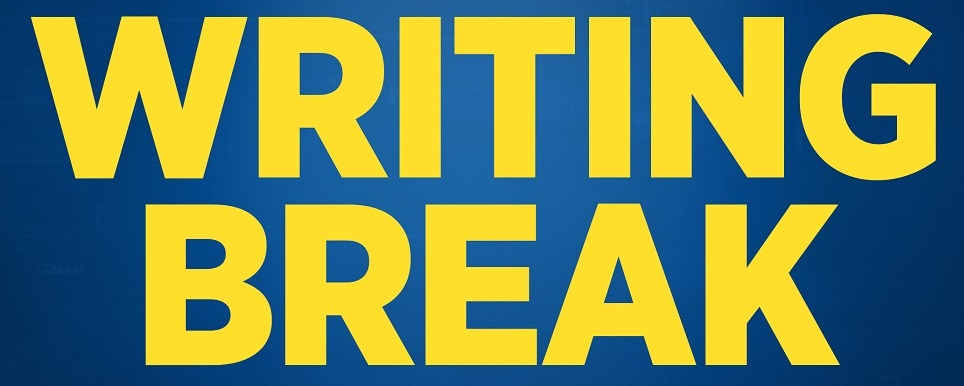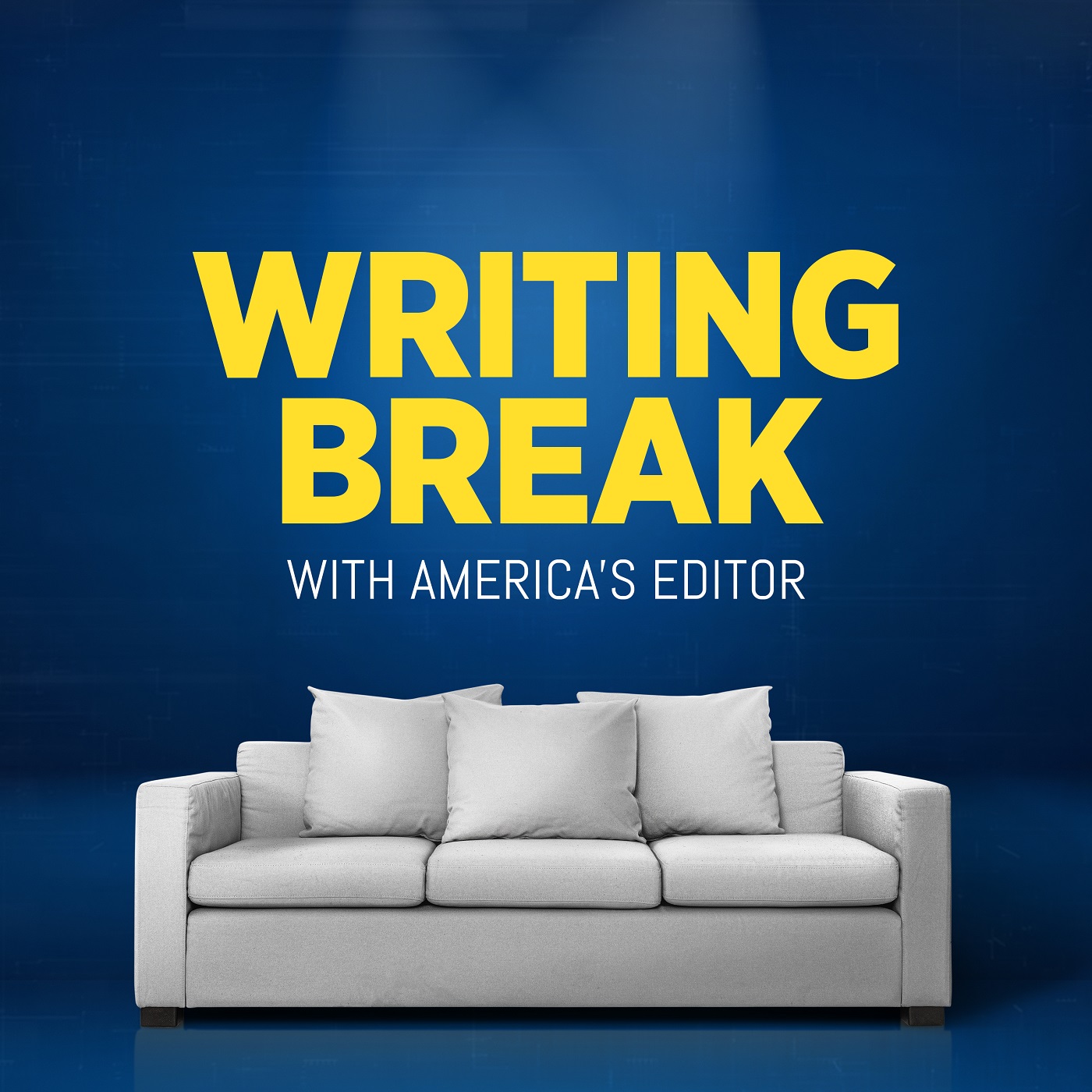Episode 64
You Wrote a Book. Now What?
This episode is all about the editing process, from start to finish.
Music licensed from Storyblocks:
“More Jam Please” by Raighes Factory
"Long Winded Woman" by Jontavious Willis
Transcript
You Wrote a Book. Now What?
Rosemi Mederos:If you have plot bunnies coming out of your plot holes, it’s time for a writing break.
Well, authors, something unexpected has come up, and I had to dash off at the last minute. So, there’s no news or bookstore today. Instead, this episode is all about the editing process. I first shared this information on The Writing Cooperative, and it was well-received there, so I thought I’d share it with you too.
Let’s slip on in to the Writing Break cafe, get a drink, and settle onto the Overthinking Couch as I explain the editing process.
You’ve written and rewritten your manuscript to the point that you can’t even look at it anymore. Congratulations, it’s time to find an editor! But what kind of editing do you need? And what in the world is the difference between line editing and copy editing?
Many authors aren’t sure what should happen after they’ve written and revised their manuscript. They know they need an editor, but they aren’t sure exactly what an editor will do to their beautiful new book. Editing is an in-depth conversation between an author and their editor, and it is a conversation that must occur out of respect for the reader.
This episode will walk you through the editing process as it would occur at a publishing house, which is how I think it should occur even if you are self-publishing. The end of the episode will touch upon working within your budget.
First off, the full book development process is as follows:
Write
Revise
Manuscript critique
Developmental edit
Line edit
Copy edit
Manuscript cleanup
Interior book formatting (sometimes called typesetting)
Proofread
Proofreading corrections
Final review
Publish
Celebrate!
Many authors tell me that they only need copy editing and don’t want to engage in the developmental editing and line editing process. The reasons behind this reluctance are usually time, money, and ego. My responses to these excuses are brief:
Time: Excellent writing takes time.
Money: One bad review will cost you more in sales than you would have spent on editing.
Ego: The right editor will fall in love with your manuscript and your purpose. A developmental editor is your assistant, not your boss. (A copy editor is your boss, so it’s okay to hate them a little.)
Let’s review the different editing stages to get a deeper understanding of what an editor does during each stage.
Manuscript critique
During this stage, the editor reads your manuscript at least twice and provides you with notes on your overall plot, diction, audience, marketability, organization, structure, premise, pacing, characters, and dialogue. These notes are presented to you in the form of an editorial letter, which is usually submitted as a PDF.
Developmental editing
In a perfect world, authors will make time for a manuscript critique and a developmental edit. In my experience, however, few independent authors do both. It’s possible to skip the manuscript critique, but that usually means the developmental edit will include redundant notes and questions that could have been easily addressed during the manuscript critique. The manuscript critique yields a sharper developmental edit. Developmental editing focuses on storytelling and your book’s purpose. This stage can begin as soon as you have a book idea. It’s a collaborative step where you and your editor discuss and research your manuscript at length. As an editor, my suggestions at this stage are specific to your voice and intention. It’s not only about what you’re doing with this book now but also about what you want to do in your writing career and what you want the book to accomplish. This is where I really get to know you. Scary, right?
Line editing
During line editing, we fine tune your voice, sentence structure, and word choice. You’ll receive notes line by line, paragraph by paragraph. If we’ve done all of the previous steps, the manuscript will begin to shine during this stage in a way you never thought possible. I’ve heard of editors combining developmental editing and line editing into one step. Do I recommend it? No. If you’re at the stage in writing where you feel you can’t look at the manuscript anymore, combining these steps will make looking at your book feel much, much worse.
Copy editing
Copy editing is where punctuation, grammar, and consistency are fully addressed. If you’ve done all of the other steps, copy editing will be painless. In fact, it’ll be fun because we get to take a look at your shining manuscript and perfect it. You know the feeling you get when you look at a cute animal sleeping in an adorable position? That should be the feeling you get when reviewing copy editing changes.
Manuscript cleanup
Manuscript cleanup is a step I perform for many publishing houses. After the author reviews my copy editing changes, I take a quick look to ensure there are no remaining comments or changes to be addressed. This means that the person formatting the interior of the book will receive the cleanest version of the manuscript possible. It’s especially useful for authors who do not have a lot of experience working with tracked changes.
Proofreading
Authors often think proofreading is the same as copy editing. It’s not. Proofreading comes after the book has been formatted. The proofreader reviews the proof pages (aka galley proofs). In addition to reading the manuscript and checking for grammar, punctuation, and consistency, the proofreader checks for missing text, incorrect formatting, erroneous running heads or page numbers, and much more. There is a technical aspect to proofreading that requires a different mindset from all other stages of editing. Performing a proofread without first doing a copy edit will result in expensive revisions. Small corrections can shift the text dramatically, sometimes even altering the page count. The book formatter has painstakingly styled your book, and a list of minor text changes can mean hours of additional work. The book formatter will charge you accordingly.
Working within your budget
With all of that said, editors know that the cost of all of these editing stages together might be too high for some independent authors. Lovely people that they are, many editors will do their best to work within your budget. Perhaps you can even barter with them. Who knows? This is where your creativity can be an advantage.
Considering how cruel readers can be to a poorly edited book, I would hesitate to publish without an editor. Do the best that you can for yourself and your writing career. In the end, if you can only afford a manuscript critique and copy editing, so be it.
Wherever you are in the editing and writing process, you’ll always need to take a Writing Break. Until next week, thanks for listening, and, remember, you deserved this break.
If you would like us to visit your favorite independent bookstore, feature your favorite independent author (even if it’s you), or discuss something you’re overthinking about, please email me at podcast@writingbreak.com.
Thank you for making space in your mind for The Muse today.
Writing Break is hosted by America’s Editor and produced by Allon Media with technical direction by Gus Aviles. Visit us at writingbreak.com or contact us at podcast@writingbreak.com.



